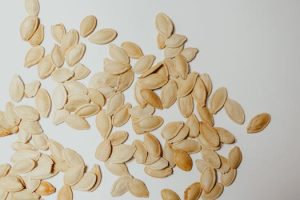Plant-Based Dairy Alternatives: Innovations in Taste and Texture
We are witnessing a major shift in the world of dairy products as more and more people are turning towards plant-based alternatives. In the past, dairy was considered to be an essential part of a balanced diet, providing crucial nutrients like calcium and protein. However, with increasing concerns about health, animal welfare and environmental sustainability, consumers are searching for alternatives that are both nutritious and delicious. This has led to a surge in innovation in the plant-based dairy sector, specifically in terms of taste and texture. In this article, we will explore the latest trends and developments in plant-based dairy alternatives, and their impact on the market.
The Rise of Plant-Based Dairy Alternatives
The demand for plant-based dairy alternatives has been steadily increasing in recent years. A report by Grand View Research predicts that the global plant-based milk market will reach $21.52 billion by 2024, with a CAGR of 10.3%. The rise in veganism, lactose intolerance, and environmental concerns are some of the key factors driving this growth. In response, food companies are introducing an array of plant-based options, including milk, yogurt, cheese, ice cream, and more. The popularity of these alternatives is not only due to their health and ethical benefits but also their improved taste and texture.
Innovations in Taste
One of the biggest hurdles for plant-based dairy alternatives has been replicating the taste of traditional dairy products. In the past, consumers often complained about the distinct and sometimes unpleasant taste of these alternatives. But with advancements in technology and R&D efforts, manufacturers are now able to closely mimic the taste of dairy milk. For instance, brands like Almond Breeze and Silk offer almond milk that is flavorless and tastes just like cow’s milk. Similarly, companies like Daiya and Violife have mastered the art of creating delicious plant-based cheese, with texture and taste similar to dairy cheese.
In addition to replicating the taste of dairy, plant-based dairy alternatives are also offering unique flavors that cater to different palates. For instance, oat milk, a relatively new entrant in the market, has become a fan favorite due to its creamy texture and subtle sweetness. It is also available in various flavors like chocolate, vanilla, and hazelnut, making it a popular choice for those looking for an alternative to dairy milk.
Improved Texture
Apart from taste, the texture of plant-based dairy alternatives has also improved significantly. In the past, alternatives like soy and almond milk were often criticized for their thin consistency, which made them less appealing for use in coffee or baking. However, companies have now developed improved methods to create a thicker and creamier texture by adding ingredients like pea protein, rice starch, and gums. This has made it easier for consumers to switch to plant-based options without compromising on the texture of their favorite dairy products.
Diversification of Ingredients
The growing demand for plant-based dairy alternatives has opened up opportunities for manufacturers to experiment with a wide range of ingredients. While soy and almond have been popular choices, brands are now introducing alternatives made from oats, rice, cashews, and even potatoes. These ingredients offer different flavor profiles and nutritional qualities, allowing consumers to have a diverse and healthy plant-based diet. This diversification also promotes sustainable farming practices, as it reduces the reliance on a single crop.
Incorporating Superfoods
In addition to traditional plant-based ingredients, manufacturers are also incorporating superfoods into their products. For instance, maca root, turmeric, and chia seeds are being used to enhance the nutritional value of plant-based milk while also providing a unique flavor and texture. Plant-based ice cream is also gaining popularity with the use of superfoods like avocados and coconut oil, making these alternatives a healthier and tastier option for desserts.
The Future of Plant-Based Dairy Alternatives
The future looks bright for plant-based dairy alternatives, with continued research and innovation in the sector. The availability of these alternatives in mainstream supermarkets and restaurants is also expected to increase, making it easier for consumers to switch to a plant-based diet. With improved taste, texture, and diversification of ingredients, these alternatives not only provide a viable option for those seeking to reduce their dairy consumption but also cater to those looking for delicious and healthy food choices.
The Importance of Google SEO
In this era of digitalization, the success of any product or brand depends heavily on its online presence. This is where Google SEO plays a crucial role. By using specific keywords, tags, and meta descriptions, content creators can optimize their articles to reach a wider audience and rank higher in Google search results. For instance, using keywords like “plant-based dairy alternatives,” “innovations,” and “taste and texture” increases the chances of this article being discovered by people looking for information on this topic.
Conclusion
Plant-based dairy alternatives have come a long way in terms of taste and texture, making them an attractive option for consumers looking for healthier and more sustainable alternatives to traditional dairy products. With continuous advancements in the sector, we can expect to see more innovations and an even wider range of plant-based options in the future. It’s exciting to see how these alternatives will continue to evolve and impact the food industry. As we move towards a more conscious and plant-based diet, these alternatives will play a significant role in shaping our food choices and the future of the dairy market.











